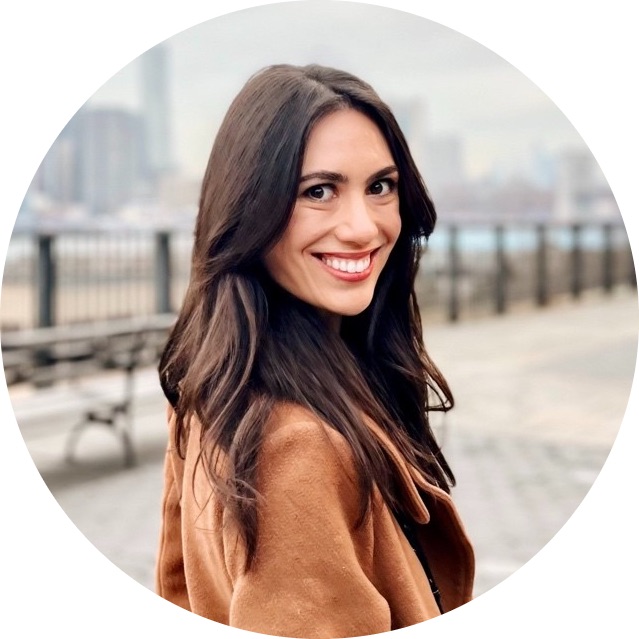Day in the life of an ex-Goldman vp turned career coach

A working day in Lindsay MacMillan’s life is anything but typical when compared to most corporate workers. That’s because she doesn’t work a corporate job anymore, having left her role as a vp at Goldman Sachs two years ago. During the six years in that role, she became accustomed to working at a desk for 15 hours a day, with little to no boundaries.
She’s now an author of two novels, working on her third and fourth book deals, and founder of her own consulting and coaching agency. Her mission is to help people tap into their creative skill sets to thrive professionally through entrepreneurial or other opportunities.
As a self-described “zillenial” born where one generation ends and another begins, she has a unique perspective on younger generations’ values when it comes to their careers — which overwhelmingly today come down to a need for both freedom and fulfillment, she said.
Morning routine
MacMillian wakes up around 5 a.m. or 6 a.m. most days and spends her morning in a deep work state, with her phone and computer on airplane mode until 10 a.m. each day. She blocks off about two to three hours to write before getting bombarded with emails and takes advantage of the early morning lack of distractions. She finds it helpful to designate certain times of the day, like mornings, for more creative work when her head is fresh and that is her only focus.
When she’s done writing she goes for a nature walk where she’s currently living in Michigan. But she’s a bit nomadic, and spent the last few weeks in Los Angeles where she took her walks on the beach in Santa Monica. She doesn’t listen to any podcasts or music when she walks to be more intentional with that time and allow creative inspiration to flow.
“I really find that to be a really creatively invigorating practice for me, to either brainstorm or just let myself daydream or kind of map out my day,” she said.
Working hours
After her walk — around 10 a.m. most days — she starts taking client calls. She takes on six clients at a time who are “either people looking to uplevel their careers, or start their own business or write a book, and I’m kind of just guiding them by being a resource or someone I wish that I had five years ago,” she said.
Following a lunch break she pivots from her creative work to jump into more execution-based tasks. That includes replying to emails, coordinating calls, scheduling and preparing for speaking engagements and solidifying PR pitches. She does that until about 4 p.m. then wraps up with more client calls, ending her official workday around 6 p.m.
Something she loves about her job now and hears from younger workers that they are looking to emulate in their own careers is the seasonality of her work, and her ability to ramp up or slow down. “The nature of the work I do and with it not being a 9-to-5, there’s a bit of seasonality to it,” she said.
When she’s in the process of actually writing her books her workload is much heavier. She had two books come out within a year, and during that period took time off from consulting projects to focus on writing and book launches. She’s now in the editing process with a new book and her workload has shrunk dramatically, allowing her to shift her focus back on consulting, speaking engagements and other events.
Gen Z clients in particular say they want jobs enabling them to have the same kind of freedom and flexibility, and her past experience working on Wall Street allows her to better understand where they’re coming from.
“So much of the standard work, we’re all just 24/7, 365,” she said. But more cyclical work schedules pose an opportunity to boost employee well-being and productivity. “I genuinely think I’m more productive because I’m able to manage those cycles.”
End of day
She has firm boundaries in place to stop checking emails and social media around 7 p.m. every night, and her phone goes back into airplane mode. She likes to spend her nights working on some creative project, watching Netflix or going out with her boyfriend or friends. Bedtime is 10 p.m., and she’ll often journal before going to sleep.
“There’s a lot sometimes that can come up,” she said. That includes ideas for new projects or tweaks to current ones that she logs in her phone’s notes app.
“It’s kind of a blessing and a curse when your passion becomes your job,” she said. But it’s not so much execution-based tasks she undertakes after hours, moreso just the result of ending back up in a creative flow, she added.
She may do some client calls or other work on Saturdays but always takes Sundays completely off. When she first left Goldman she struggled saying no to weekend work, which she was accustomed to, but soon realized that “there’s not the same level of artificial urgency that something needs to be done,” she said.
“My first few weeks after I left Goldman and was working for myself full-time, l put so much pressure on myself.” She was used to working at a desk 15 hours a day and having little to no boundaries, but realized “I was just defeating the whole point of working for myself, which is having more flexibility and flow and creative time.”

